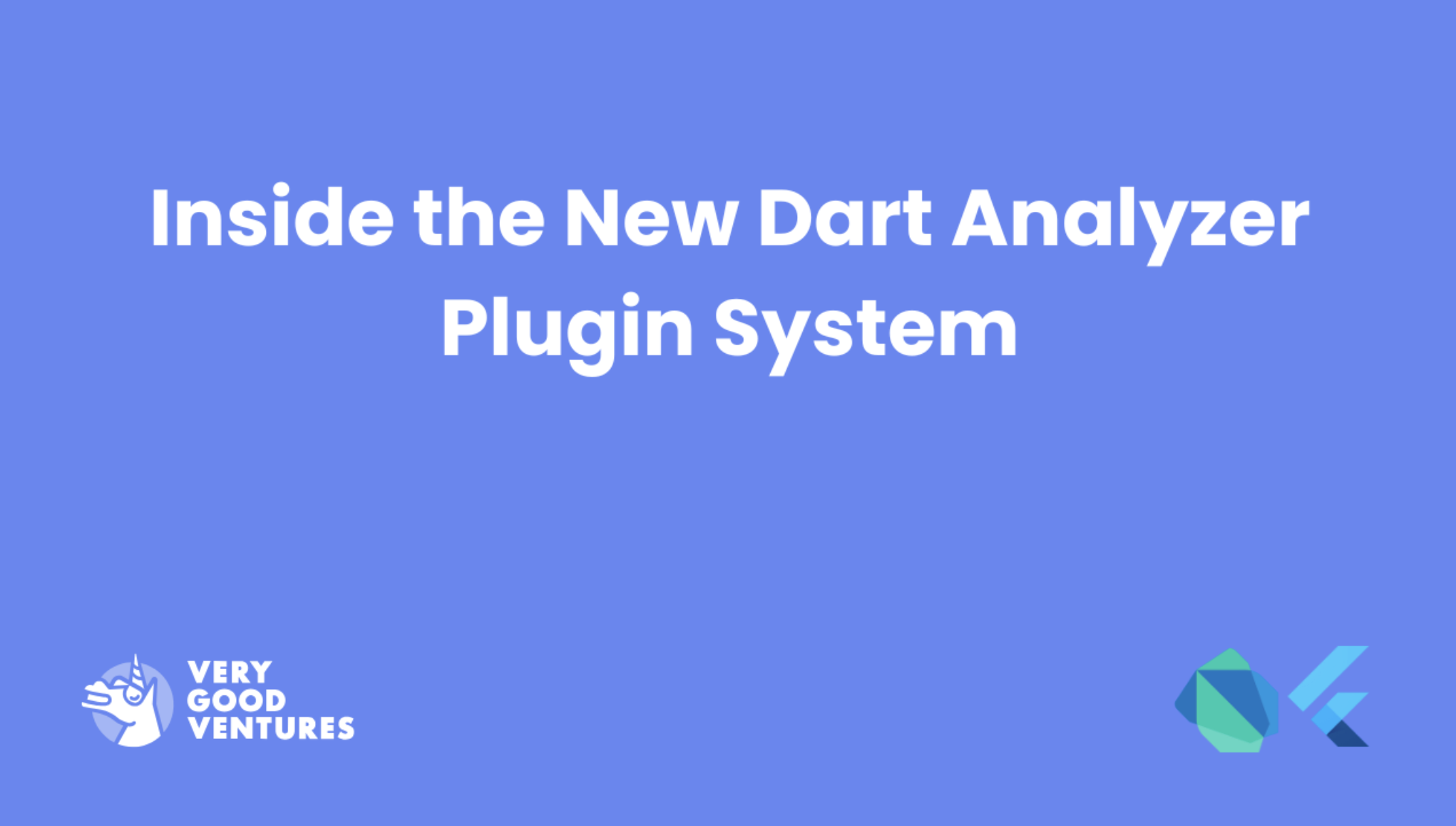Flutter Myths: Clearing Up Common Misconceptions
Setting the Record Straight with a Little Unicorn Magic & Expertise
.png)
Myths can be a lot of fun (Sasquatch roaming the Pacific Northwest, anyone?). However, when it comes to popular technology like Flutter, those myths can sometimes cause hesitation or confusion for new users.
Enter: Very Good Ventures. With years of hands-on experience, the VGV team has debunked the biggest Flutter myths to show you why it’s the top choice among developers and how it can unleash your company’s potential.
The Truth Is Out There: Common Flutter Myths Explained
Myth #1: “Flutter isn’t as performant as Native solutions”
Cross-platform frameworks, including Flutter, often carry a reputation for lower performance, frequently being grouped with other frameworks and assumed to be slower or less efficient than native options. However, Flutter’s unique issues don’t typically mirror the problems faced by other frameworks, as Dart compiles directly to machine code and Flutter leverages Impeller for rendering, which enables a smooth UI experience comparable to native. Thanks to its robust framework, Flutter supports high-performance applications with ease, making it a powerful solution for performance-driven cross-platform apps.
Myth #2: “Flutter developers don’t need Native experience or knowledge”
Flutter’s simplified, cross-platform codebase may seem to eliminate the need for native expertise. Yet, for tasks like integrating custom plugins, managing platform-specific dependencies, or working with native SDKs, some familiarity with native Android or iOS development is invaluable. Native experience isn’t strictly required, but handling more complex Flutter applications can be a big advantage.
Myth #3: “Flutter lacks plugin availability, making it hard to implement certain functionalities without custom code.”
In Flutter’s early days, plugin options were limited. But today, there are numerous plugins-like camera, file_selector, google_maps_flutter, google_sign_in, etc., for nearly any functionality a project might need, with many officially supported by the Flutter team, including share_plus, sensors_plus, among others.
When an existing plugin doesn’t meet a project’s needs, Flutter also offers the flexibility for developers to create custom plugins by leveraging native code, ensuring they can extend functionality to fit any requirement.
There are still some challenges to face, particularly for newer platforms such as Web, macOS, Windows, and Linux. In these areas, the plugin ecosystem may not yet be as comprehensive as it is for the more established iOS and Android platforms.
But, despite these obstacles, the progress is undeniable. Over the past 3-5 years, plugin availability for iOS and Android has grown significantly, offering developers a much richer and more seamless experience than in the early days of Flutter.
Myth #4: “You’ll have to learn a whole new programming language”
While Dart (the programming language behind Flutter) may be new to some developers, it’s specifically designed to be easy to learn. Developers familiar with JavaScript, Kotlin, Java, or Swift often find that Dart has a smooth learning curve, allowing them to become productive quickly.
Myth #5: “Google might cancel Flutter”
There are concerns that Flutter might someday be left behind, especially given the history of other tech giants turning off projects. However, Flutter’s widespread use within Google–combined with its strong open-source community and growing adoption outside of Google–indicates a stable future. Even if Google’s focus were to shift, Flutter would likely continue to thrive as an open-source project supported by a robust community invested in its success.
Myth #6: “Flutter doesn’t work well for the Web”
While Flutter may not yet be ideal for SEO-focused sites or static text-heavy pages, it’s exceptional for building dynamic web applications like dashboards and interactive applications. With Flutter, developers avoid complex styling and CSS issues, enjoy streamlined animations, and benefit from cross-platform capabilities that easily extend from web to mobile and desktop. Upcoming support for WebAssembly promises to boost performance even further, solidifying Flutter as a versatile option for web apps.
Want to see how VGV and the Flutter team successfully built projects that run seamlessly on the web? Check out the I/O Pinball Game and the Flutter Forward Holobooth.
You can also watch one of the main talks at Fluttercon USA 2024, "Implications of Flutter Wasm", by Kyle Finlinson, Senior Engineer at VGV. You'll get an expert's insights on best practices, benefits, and key implementation considerations for using WebAssembly (WASM) and get a deeper look at why this myth doesn't hold up.
Unlock Flutter’s Full Potential
Flutter’s rapid evolution has fueled misconceptions about its limitations, many of which no longer apply. With strong performance, an extensive selection of plugins, and an engaged developer community, Flutter is a powerful and often advantageous choice for cross-platform mobile, web, and desktop development. Now that we’ve debunked these myths, are you ready to explore Flutter’s potential?
If you’re interested in learning more about building with Flutter, reach out—let’s dive into the infinite possibilities together!
Insights from Our Experts
.png)
Inside Codemagic’s Rise: Flutter, Community, and the Future of Developer Tools
Lorem ipsum dolor sit amet, consectetur adipiscing elit. Suspendisse varius enim in eros elementum tristique. Duis cursus, mi quis viverra ornare, eros dolor interdum nulla, ut commodo diam libero vitae erat. Aenean faucibus nibh et justo cursus id rutrum lorem imperdiet. Nunc ut sem vitae risus tristique posuere.

Creating Your First Dart Analyzer Plugin with the New Plugin System
Lorem ipsum dolor sit amet, consectetur adipiscing elit. Suspendisse varius enim in eros elementum tristique. Duis cursus, mi quis viverra ornare, eros dolor interdum nulla, ut commodo diam libero vitae erat. Aenean faucibus nibh et justo cursus id rutrum lorem imperdiet. Nunc ut sem vitae risus tristique posuere.

How We Efficiently Onboard Engineers at Very Good Ventures
Lorem ipsum dolor sit amet, consectetur adipiscing elit. Suspendisse varius enim in eros elementum tristique. Duis cursus, mi quis viverra ornare, eros dolor interdum nulla, ut commodo diam libero vitae erat. Aenean faucibus nibh et justo cursus id rutrum lorem imperdiet. Nunc ut sem vitae risus tristique posuere.



